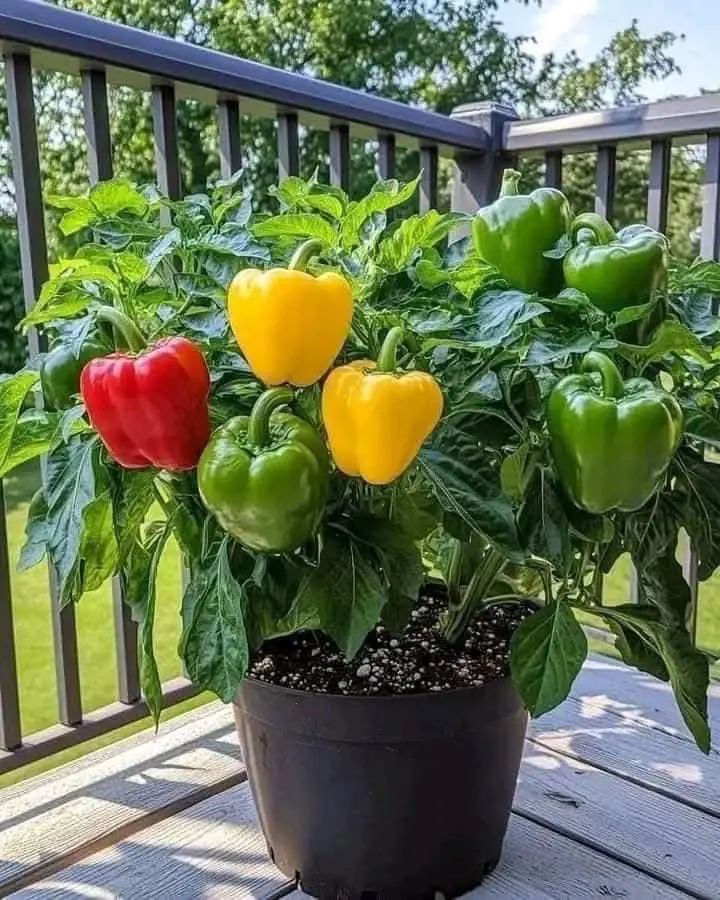
Grow Your Own Asparagus Plants
Asparagus is an easy-to-grow, perennial garden vegetable. Learn about different varieties & what to expect from growing asparagus plants right at home.
Once upon a time, many years ago, people would grow asparagus for its medicinal properties and it was considered a delicacy. Today, asparagus is commonly available and a great source of vitamins and minerals. It also makes a great, and easy, addition to your backyard garden.
There are two common types of asparagus plants: green and purple (burgundy). Both types require the same care and maintenance and are commonly distributed as all-male plants as these are bigger and more suitable for eating. Green asparagus is more productive and it can be found in grocery stores – fresh bundles in the produce section, frozen, and even canned. Purple asparagus is more tender and sweeter than the green stalks, but it is also rarely found in stores. When cooked, purple/burgundy asparagus will become green, so, for full visual appeal, it's best enjoyed fresh!
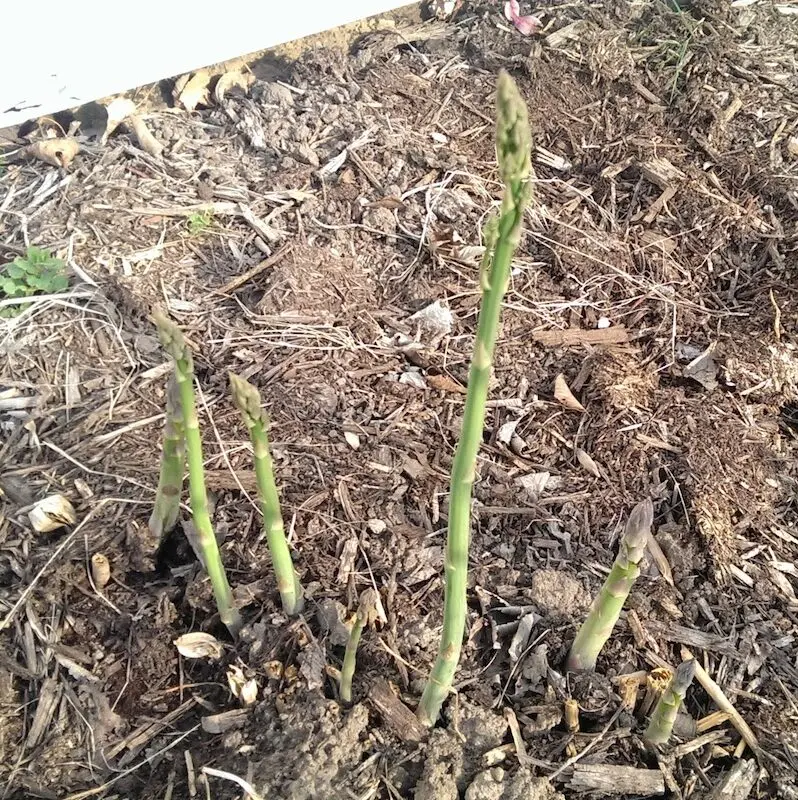
Bare-Root Asparagus
Here at Stark Bro's, our asparagus plants ship as bare-root crowns, dormant and ready to be planted when they arrive. If you are unable to plant when your asparagus plants arrive, we have some tips for ways you can delay planting here.
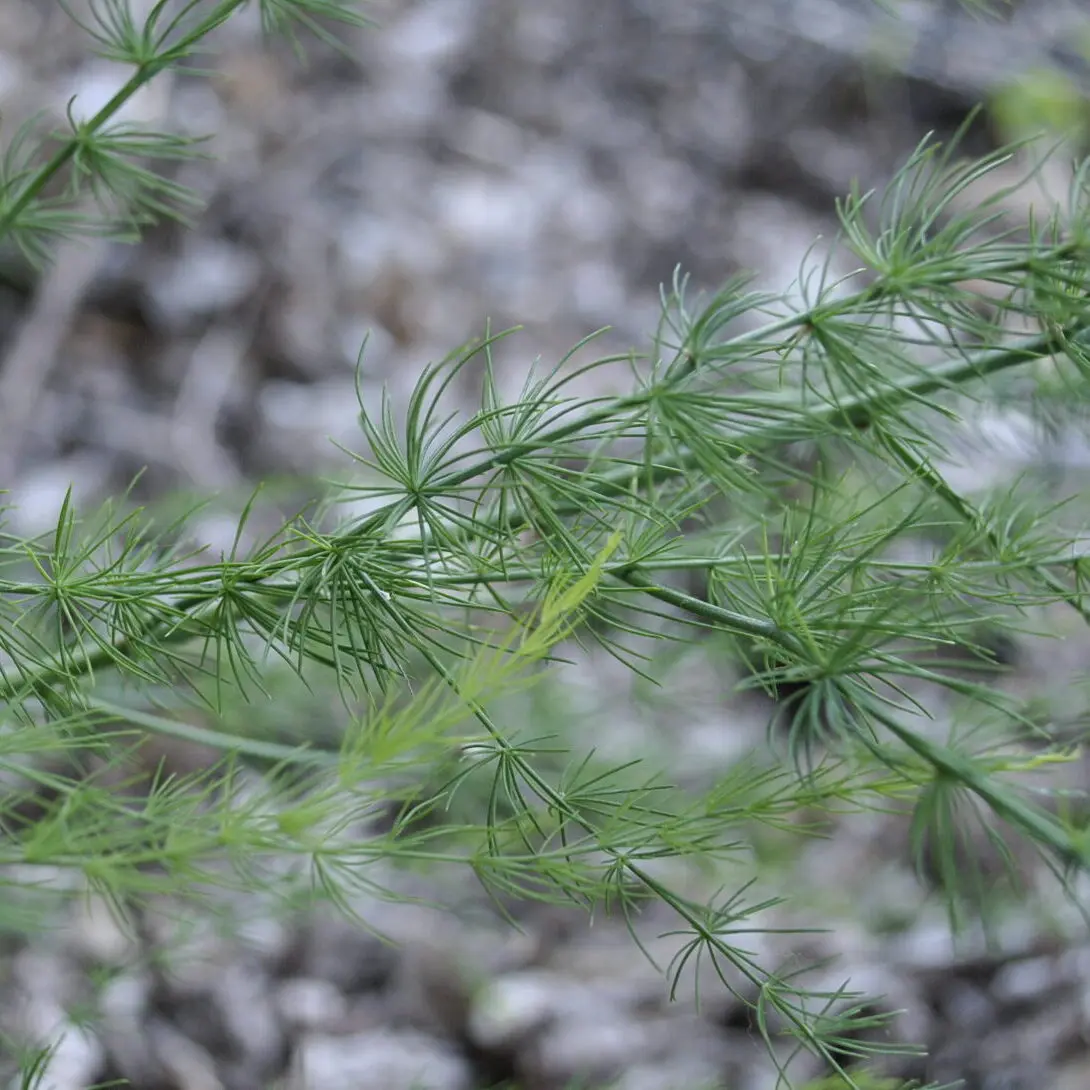
These plants will require 2-3 more years to fully mature. For the first couple years, your plant will feature tiny asparagus-like sprouts that may be lightly harvested as the plant becomes established. Harvesting is easy — simply cut the shoots/spears just below the soil surface or just above the ground. The young spears are what get eaten most commonly because, once the buds along the shoots open, the plant will take on a fern-like appearance and become "woody" fairly quickly. Asparagus tends to be less appetizing once it reaches this point.
In the first few years, as the plants become established and mature, a majority of the spears should be allowed to progress to the "fern" stage to gather nutrients to support future spear development. Asparagus plants are easy to grow in most areas. Since asparagus is a perennial vegetable, it comes back year after year. A good harvest method is simply to select the larger stalks to eat and let the smaller ones leaf-out and support the asparagus plant's future productivity. After planting, asparagus plants become productive within a few short years (at least two full growing seasons), so look forward to harvesting your own asparagus each year starting in early spring!
Quick Guide to Growing Asparagus
- Plant asparagus in spring or fall in a sunny spot with nutrient-rich, well-drained soil.
- Asparagus takes a few seasons to mature but will reap a harvest for 15 to 30 years, so choose a planting location that will go undisturbed for a long time.
- For spring planting, prepare your garden bed in the fall by improving the soil with compost or other rich organic matter, then cover the bed with mulch for the winter.
- In spring, dig 6- to 8-inch deep rows and plant asparagus 12 to 18 inches apart.
- As asparagus grows taller, backfill the rows with soil until it is eventually level with the garden bed.
- Once your rows are level with the soil line, lay down a layer of mulch to retain soil moisture and prevent weeds.
- During the growing season, feed regularly with a continuous-release plant food.
- Wait until your second or third season to harvest. You can pick mature asparagus once they reach 8 inches tall.
Soil, Planting, and Care
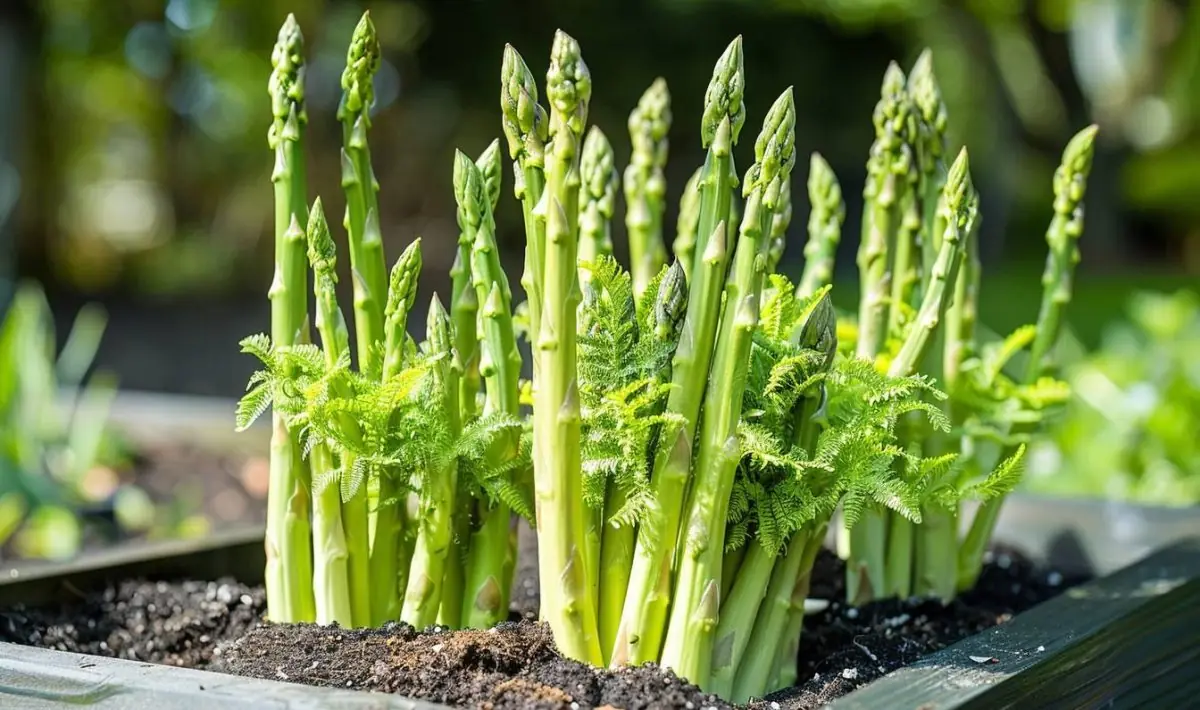
The key to growing asparagus is to have healthy, vigorous plants that produce a lot of spears. Choose a sunny, well-drained site on the edge of your garden where it will not be disturbed by the activity of planting and re-planting other areas.
Planting asparagus is like preparing for a trip. Careful preparation makes the journey easier. It is the same with asparagus. Before you buy the plants, you need a prepared bed. How well you prepare the bed determines the vigor of your asparagus patch for years to come. (See more on that below.) When you do buy plants, make sure they're Bonnie Plants® asparagus. Strong and vigorous, these young plants will give your asparagus patch an excellent start—and put you way ahead of where you would be if you were to plant seeds.
In autumn, prepare the soil by mixing in several inches of organic matter (think compost or aged leaves) or compost-enriched Miracle-Gro® Performance Organics® All Purpose In-Ground Soil with the native soil in each row. This will provide all the nutrition your new asparagus plants need to start growing. Mulch for the winter, or grow a cool-season cover crop that can be turned under before planting in spring.
In spring, after danger of frost has passed, dig a depression 6 to 8 inches deep running the length of the row, mounding the improved soil on each side for later use. Set seedlings into the lowest part of the depression, planting about 2 inches deeper than they were originally growing. Space plants 12 to 18 inches apart. (Asparagus can also be planted in the fall. For more on that, check out our How to Plant a Fall Garden article.)
In addition to great soil, asparagus needs a steady supply of plant food to grow its best. Feed your plants with Miracle-Gro® Performance Organics® Edibles Plant Nutrition Granules regularly during the growing season, following the directions on the label. In addition to feeding your plants, this organic fertilizer feeds the beneficial microbes in the soil that help those plants take up more nutrition.
As plants grow taller, rake a little of the soil on the edge of the row into the depression where plants are growing. Soon the bed will be level. Mulch to prevent weeds.
Then all you need to do is be patient. The idea is to wait at least 2 seasons and probably 3 before harvesting. It may be hard to resist tasting the first spears to emerge, but go easy on the plants until they mature. You'll be rewarded in the long run!
Troubleshooting
Bent spears are caused by insects feeding or damage from cutting adjacent stalks. The damaged stalk grows normally on the side away from the wound, causing the spear to bend.
A well-drained bed will have minimal disease problems. Black and red asparagus beetles can be a challenge, damaging the foliage and weakening the roots. Usually, you can control them with hand picking. Just drop them into a bucket of soapy water.
Harvest and Storage
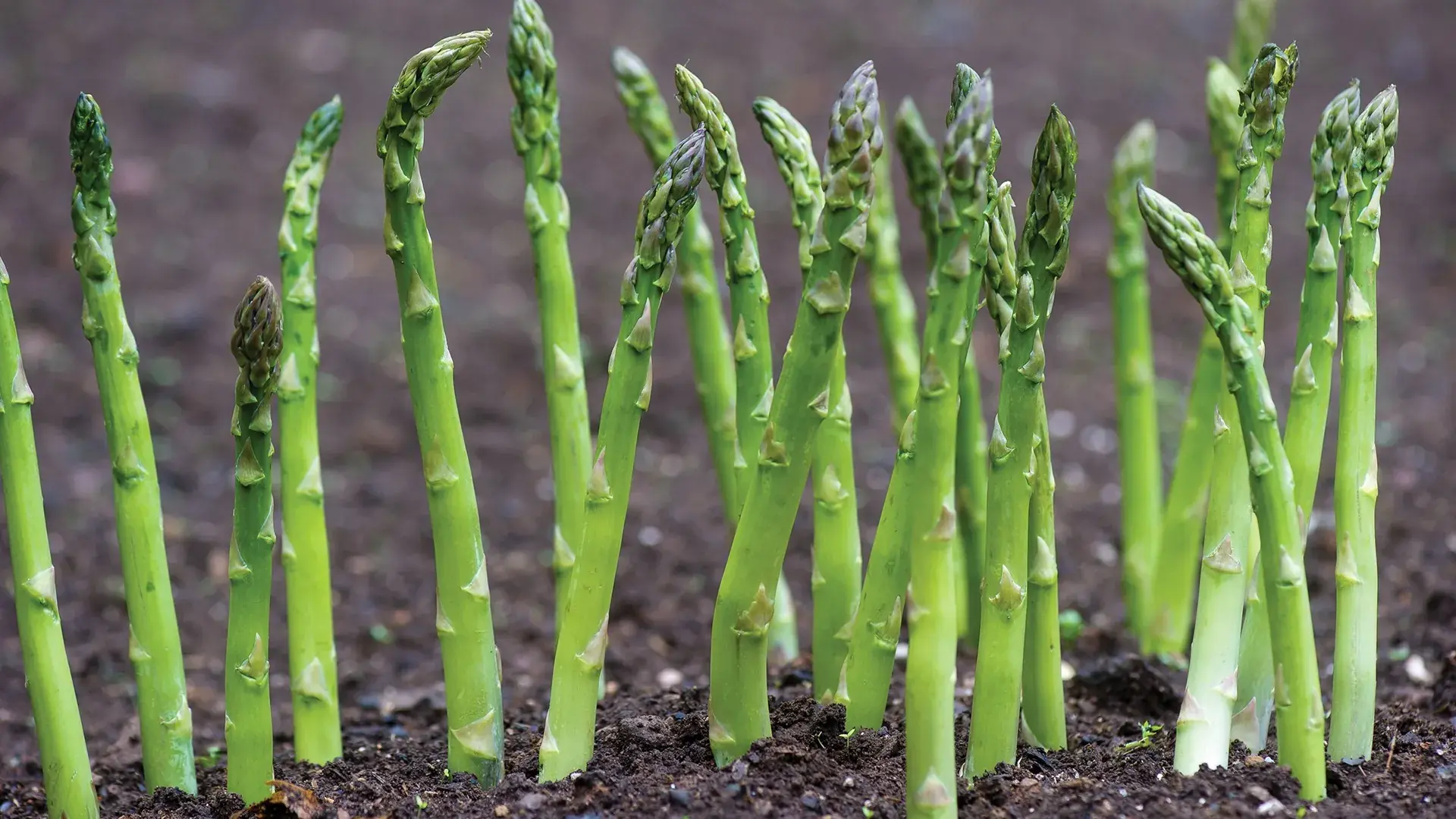
Once asparagus plants are strong enough to be harvested, cut all new shoots in spring when they are about 8 inches tall, snapping them off at the soil line. Many seasoned gardeners use a knife to cut below the soil line, but it is important to avoid cutting into emerging spears nearby. Also, the knife can spread any disease from one plant to the next.
Remember, if the spear has begun opening and developing foliage, it will be too tough to eat. To avoid this happening, plan to harvest at least every other day. Go ahead and pick all the spears each time you harvest. Discard those that have grown too large.
The duration of your harvest will depend on the vigor of your plants. If your plants are young, the fresh asparagus season may last a couple of weeks. However, established plants can produce much longer, as much as 8 weeks. The old rule of thumb is to harvest until the diameter of the spear decreases to the size of a pencil. Then it is time to stop and let them grow, gaining strength for next spring.
Cook cut spears immediately or refrigerate in plastic to raise the humidity and prevent tough fibers from forming at the base of the spear. These fibers form as a result of the injury of cutting. That's why spears from the grocery store or from the refrigerator should always be trimmed to remove any tough tissue before cooking.
Fresh asparagus spears can be stored a week or more. If you want to put some aside to enjoy in the months to come, blanch them in boiling water for 3 to 5 minutes, douse in cold water, wrap, and freeze.
Cut back the 4 to 6-foot tall foliage, or the ferns as they are called, after frost has turned them brown. This is a good time to control weeds because the asparagus are dormant. Keeping the bed weed-free is important to avoid competition with your asparagus plants. Because the soil is so rich, invaders can take hold quickly.
News in the same category

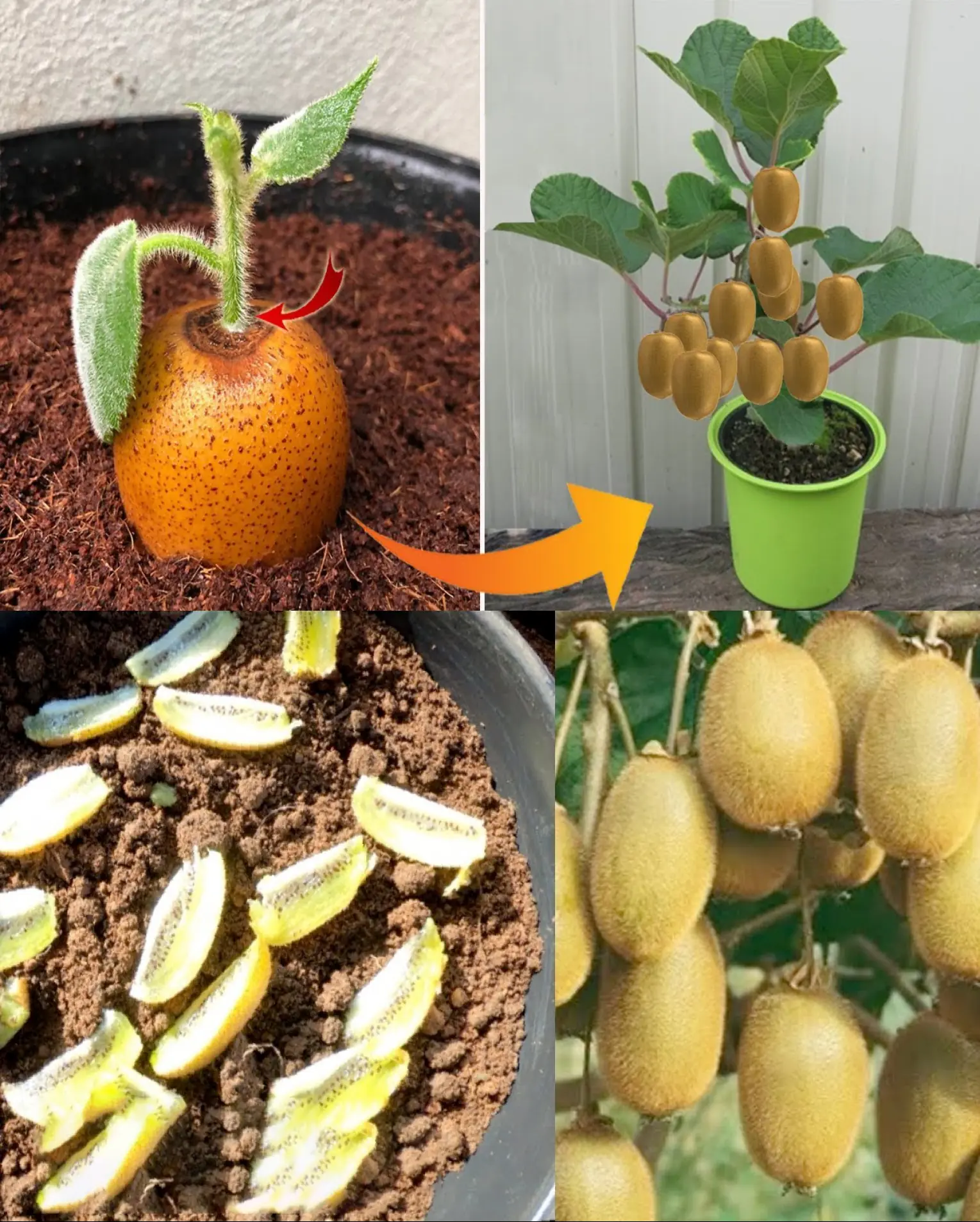
How to Grow Kiwi in Containers at Home
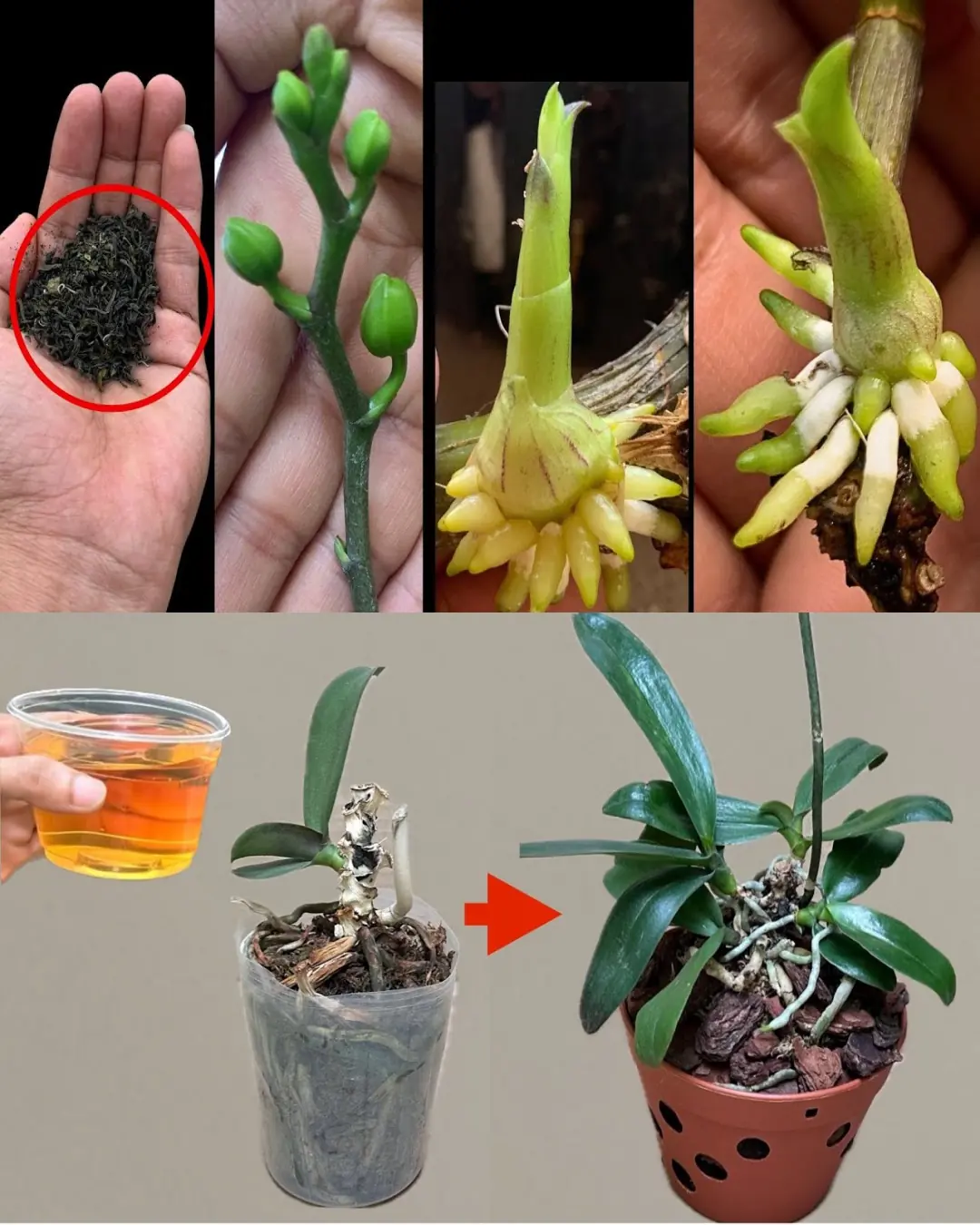
Revitalizing Orchids Using Tea: A Comprehensive Guide with Handy Tips
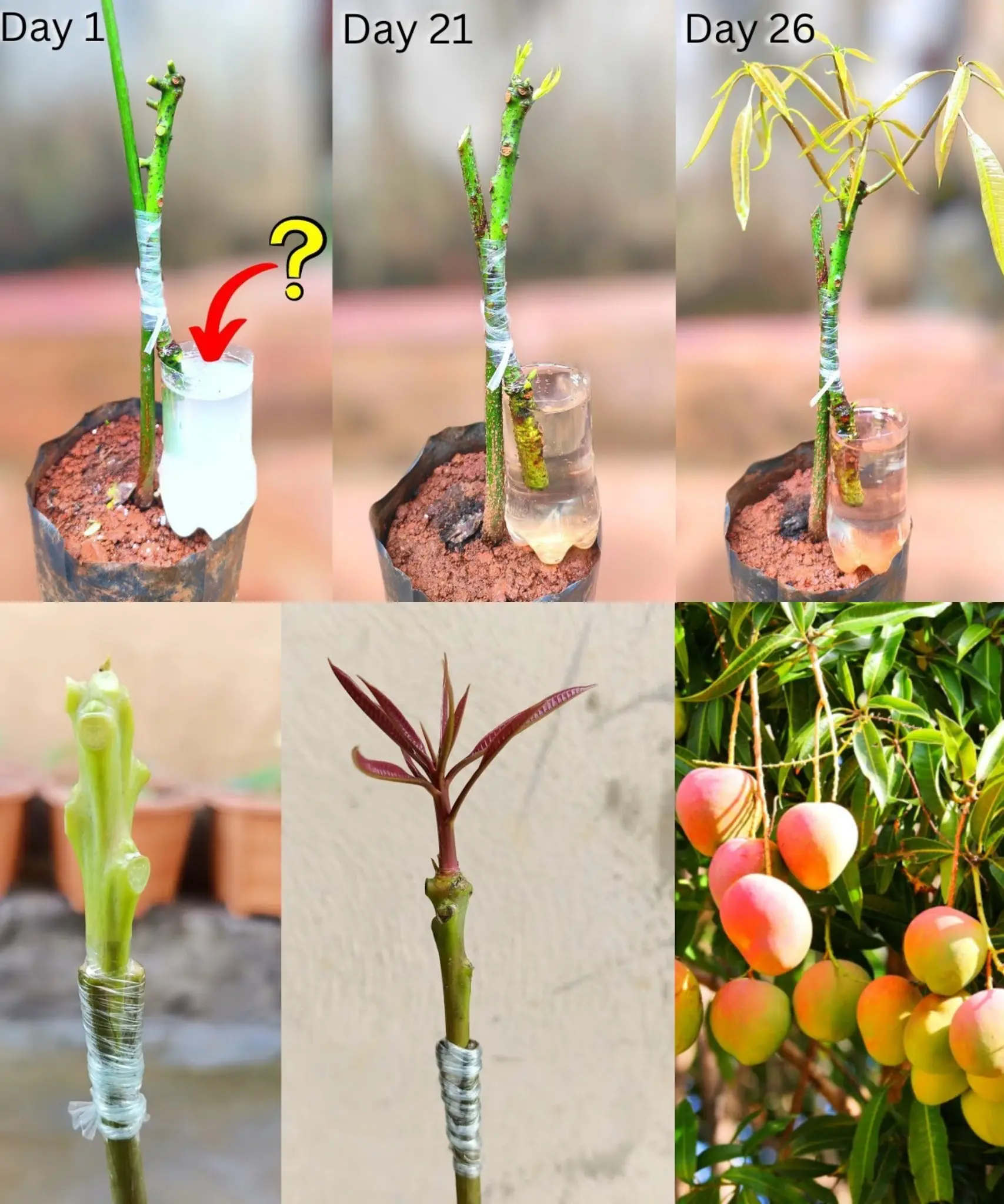
How to Plant a Mango Seed and Successfully Grow
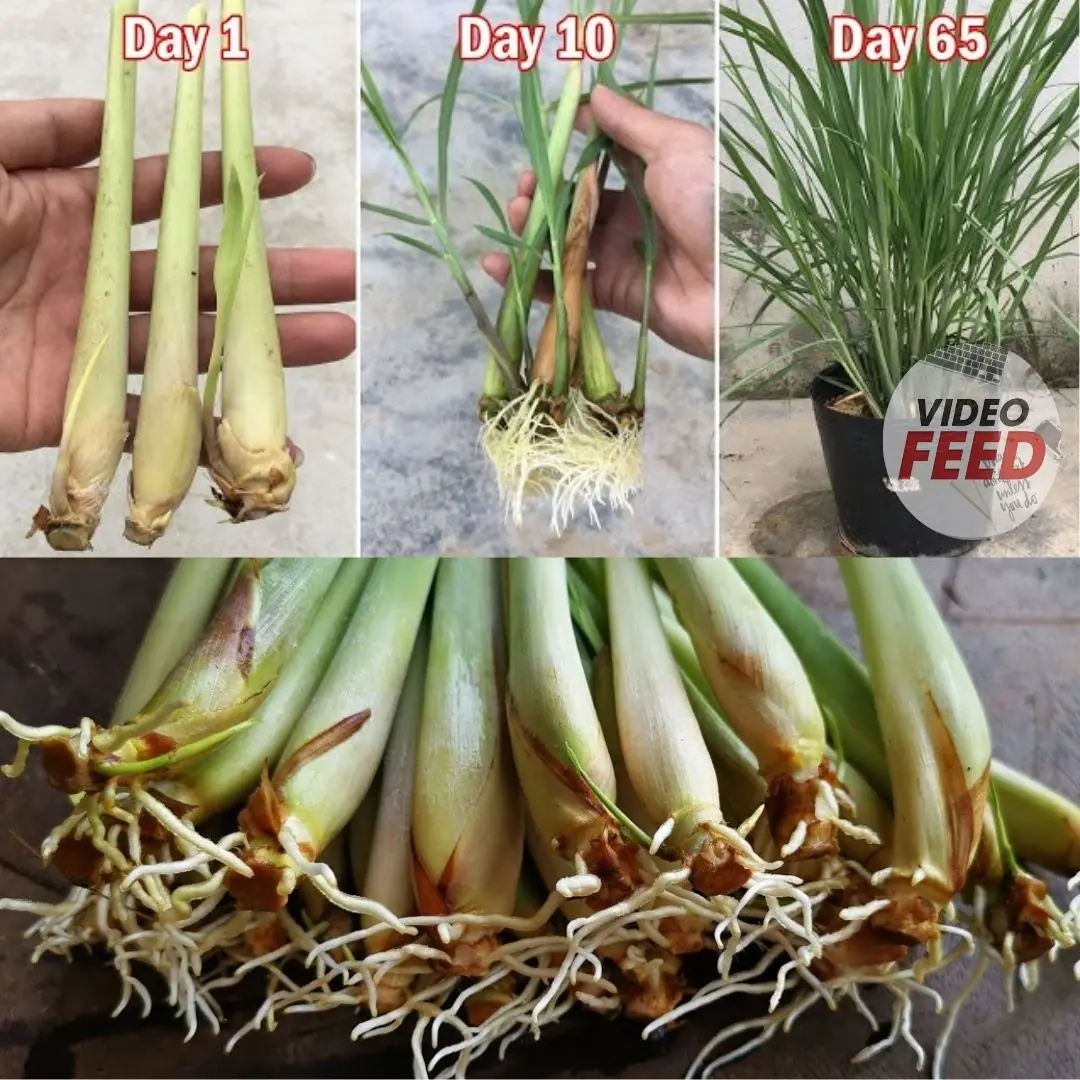
Secrets to growing lemongrass at home – easy to do, suitable for beginners
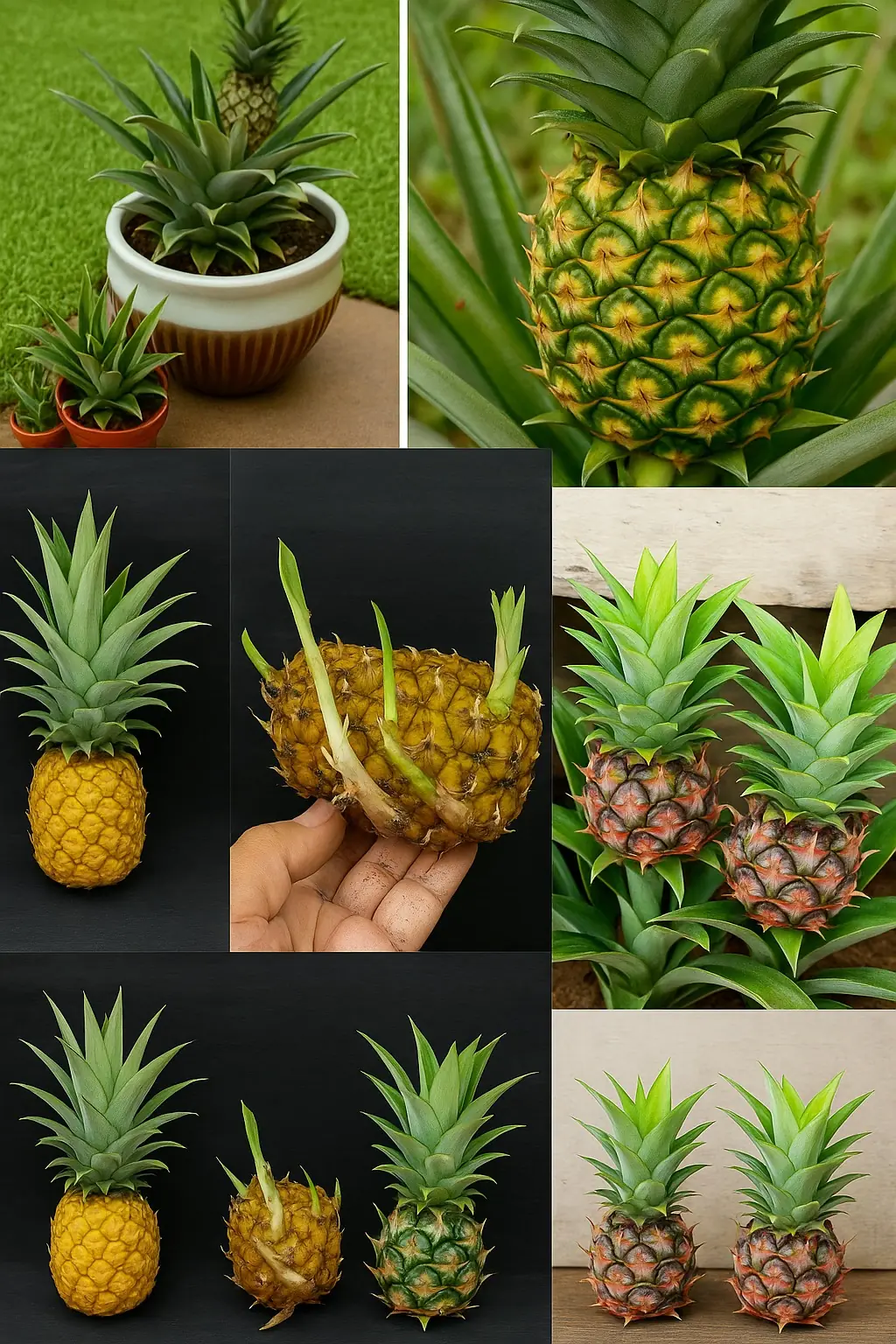
How to Grow a Pineapple at Home: Simple and Fast
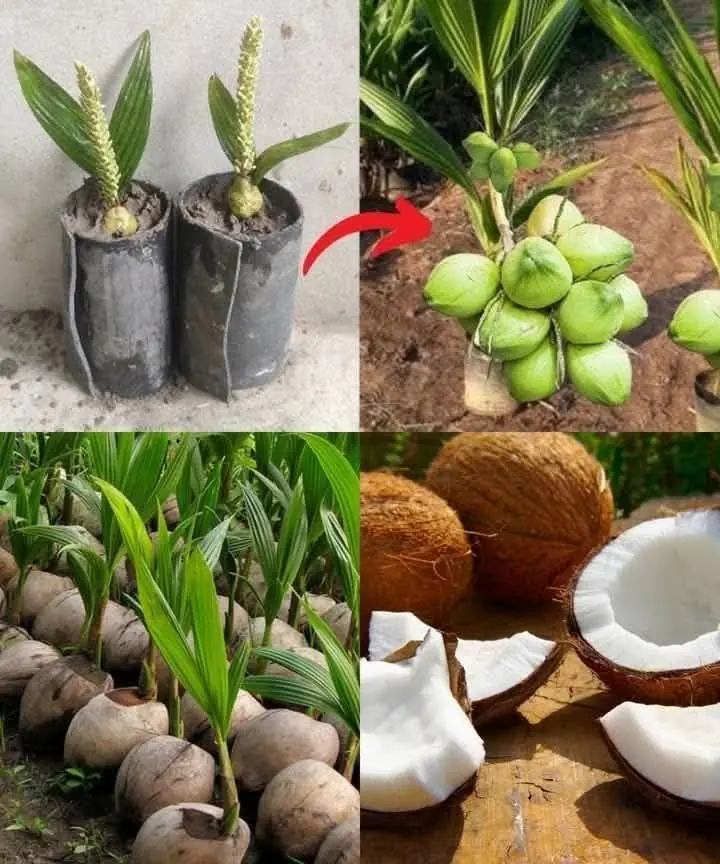
How To Grow Coconut Tree From Coconut Fruit
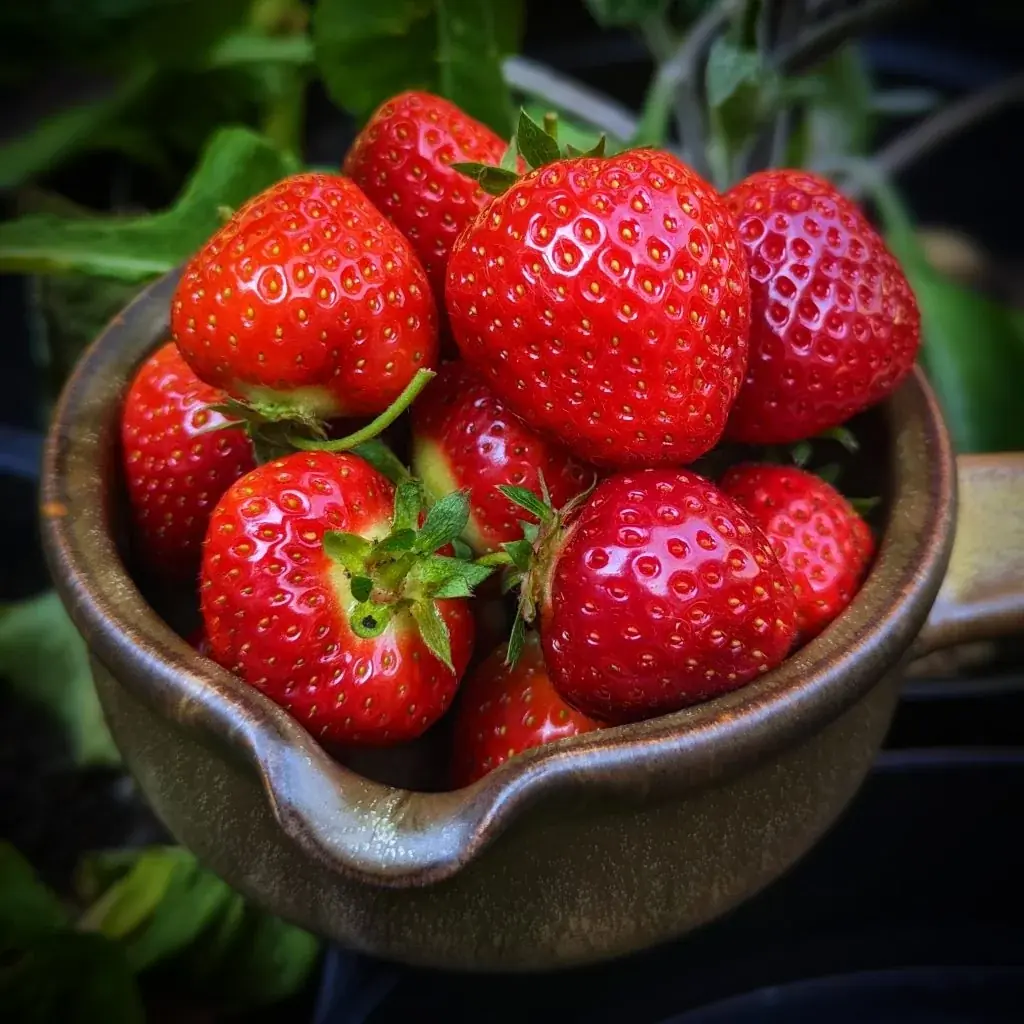
How To Grow Strawberries From Seed
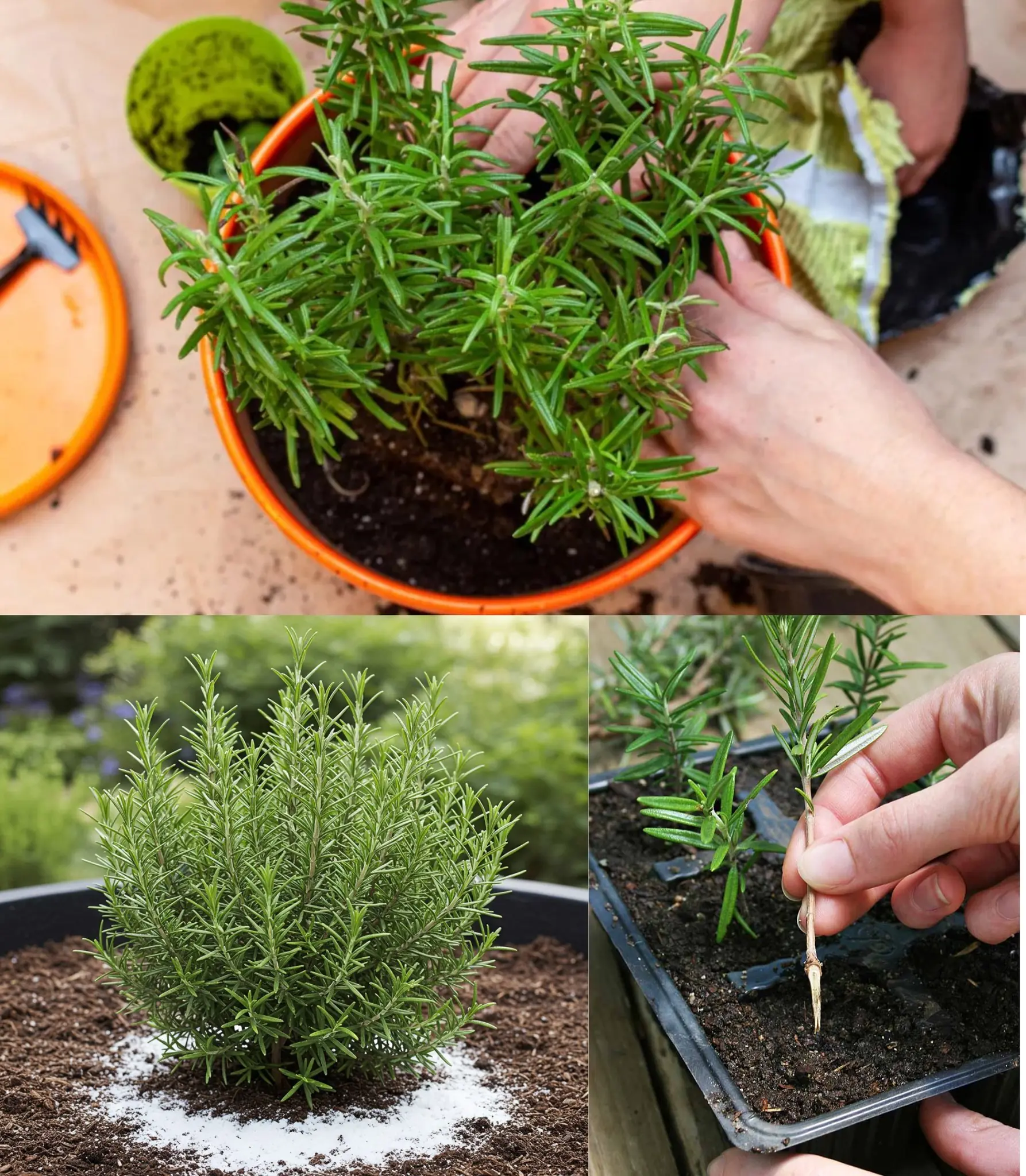
Rosemary Never Dries Again – Here’s the Gardener’s Trick!
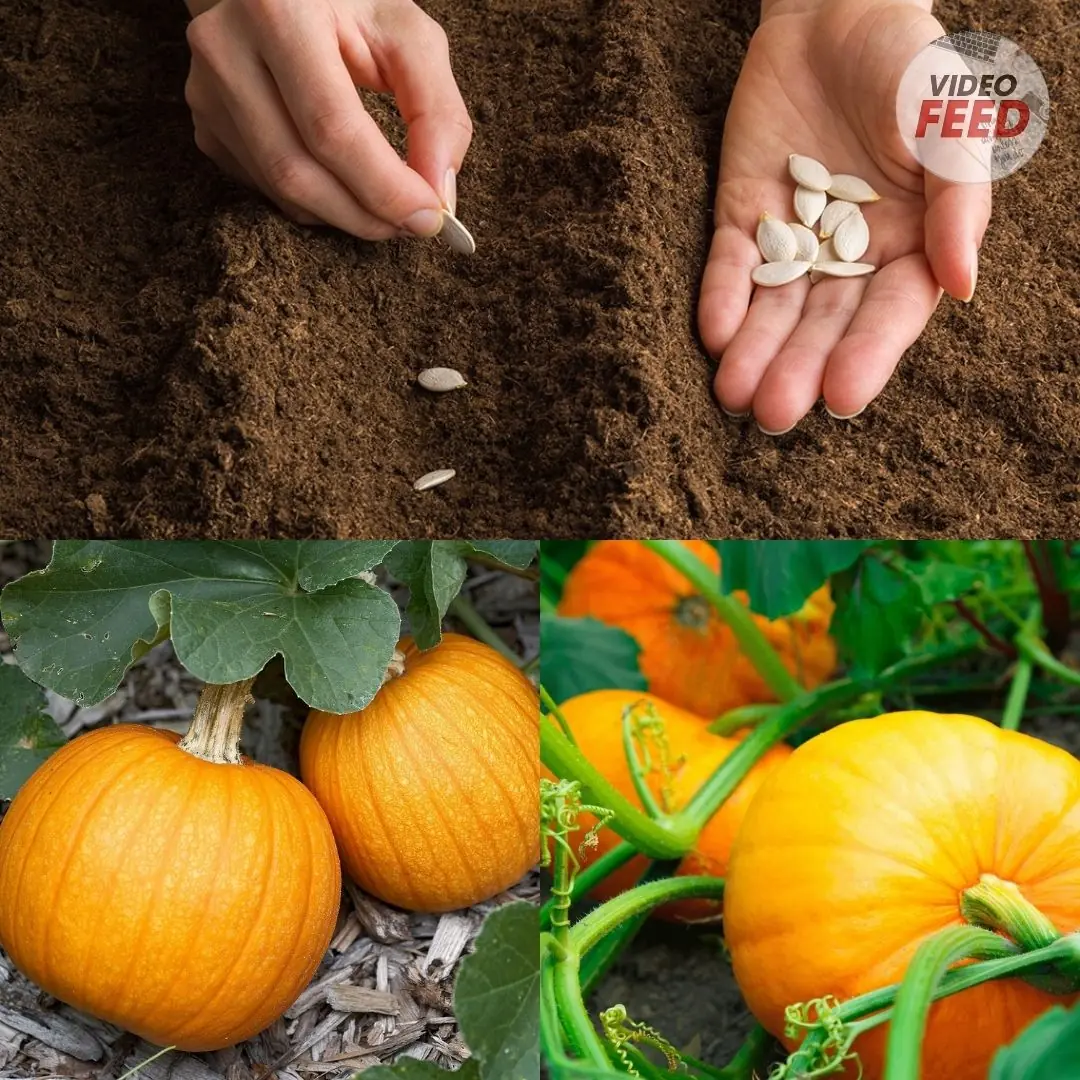
How to Grow Pumpkins in Your Home Garden
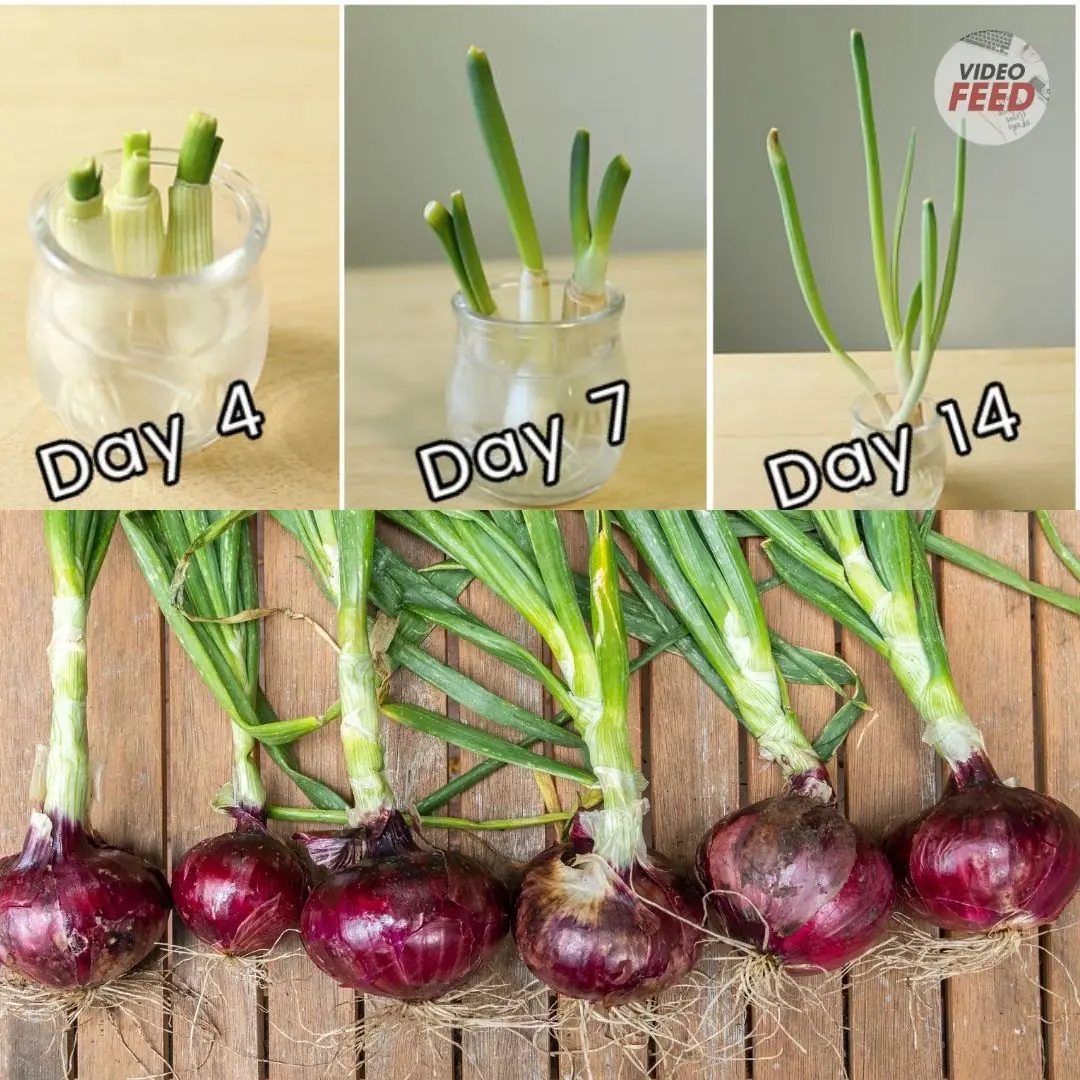
How to Grow and Care for Red Onions in the Garden
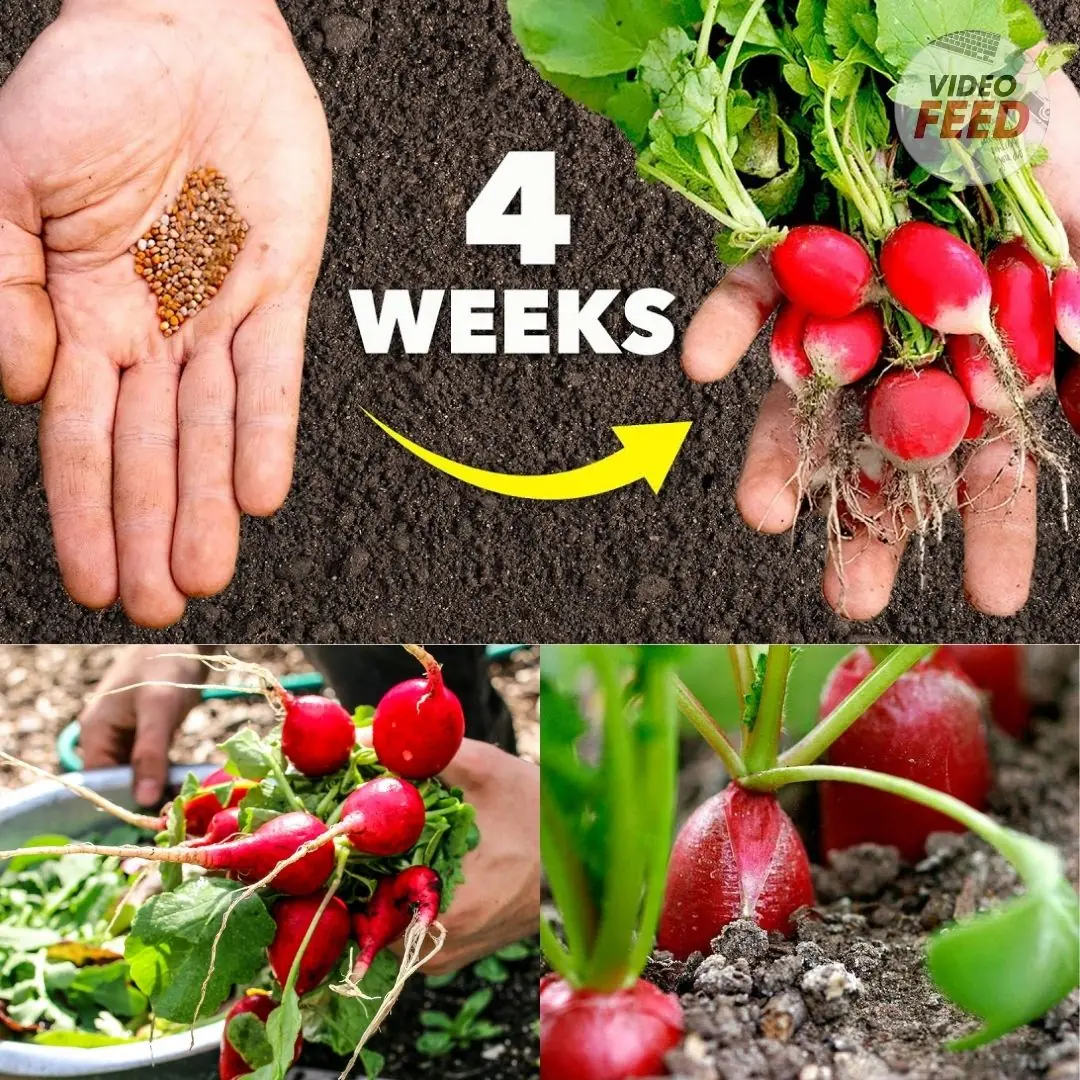
6 Easy Steps to Plant Radish Seeds in an Organic Kitchen Garden
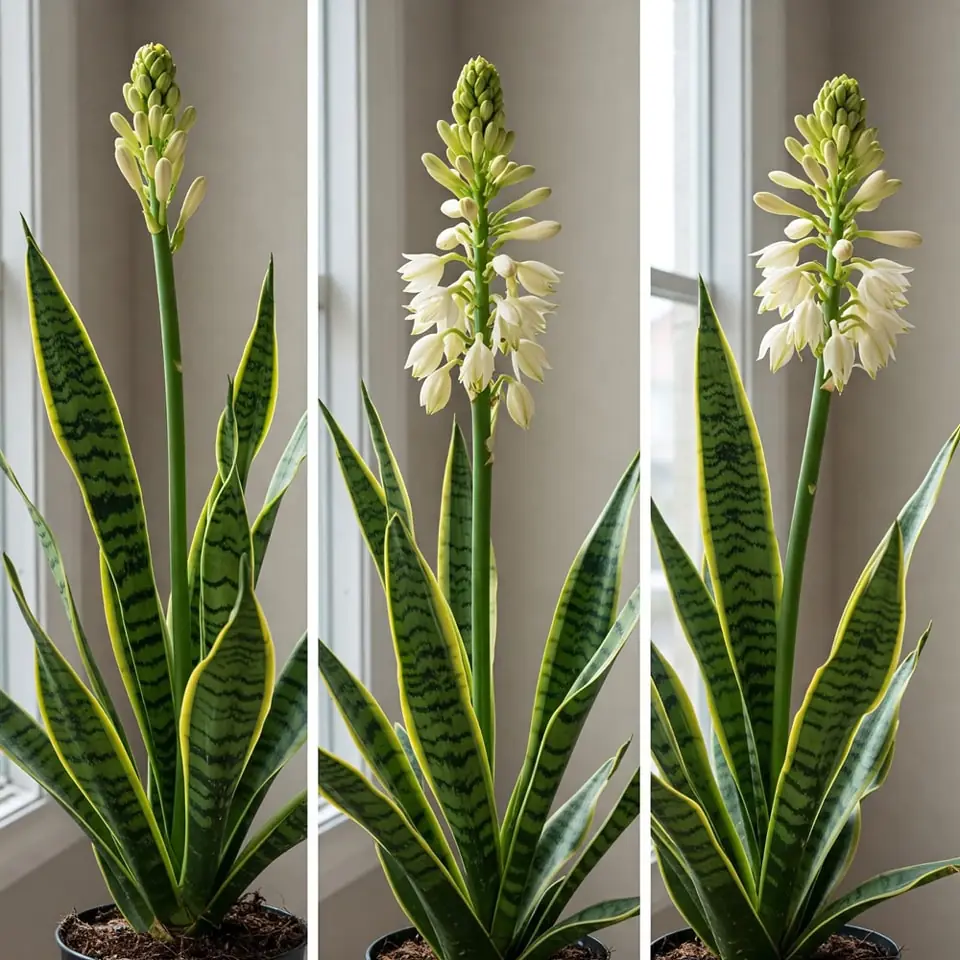
Snake Plants and Their Rare Blooming Phenomenon: A Guide to Encouraging Flowers
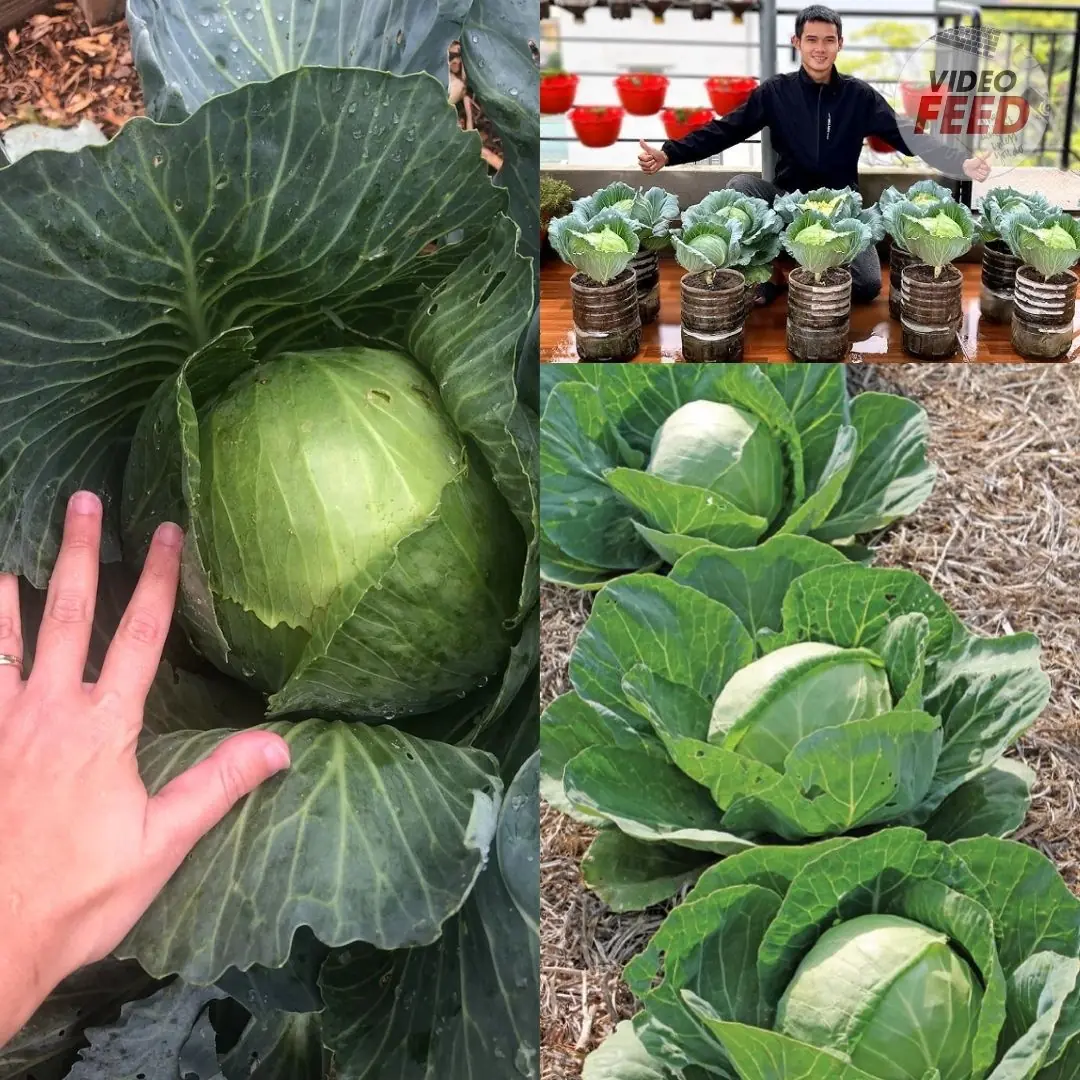
How to Grow Cabbage: 10 Tips for a Successful Harvest
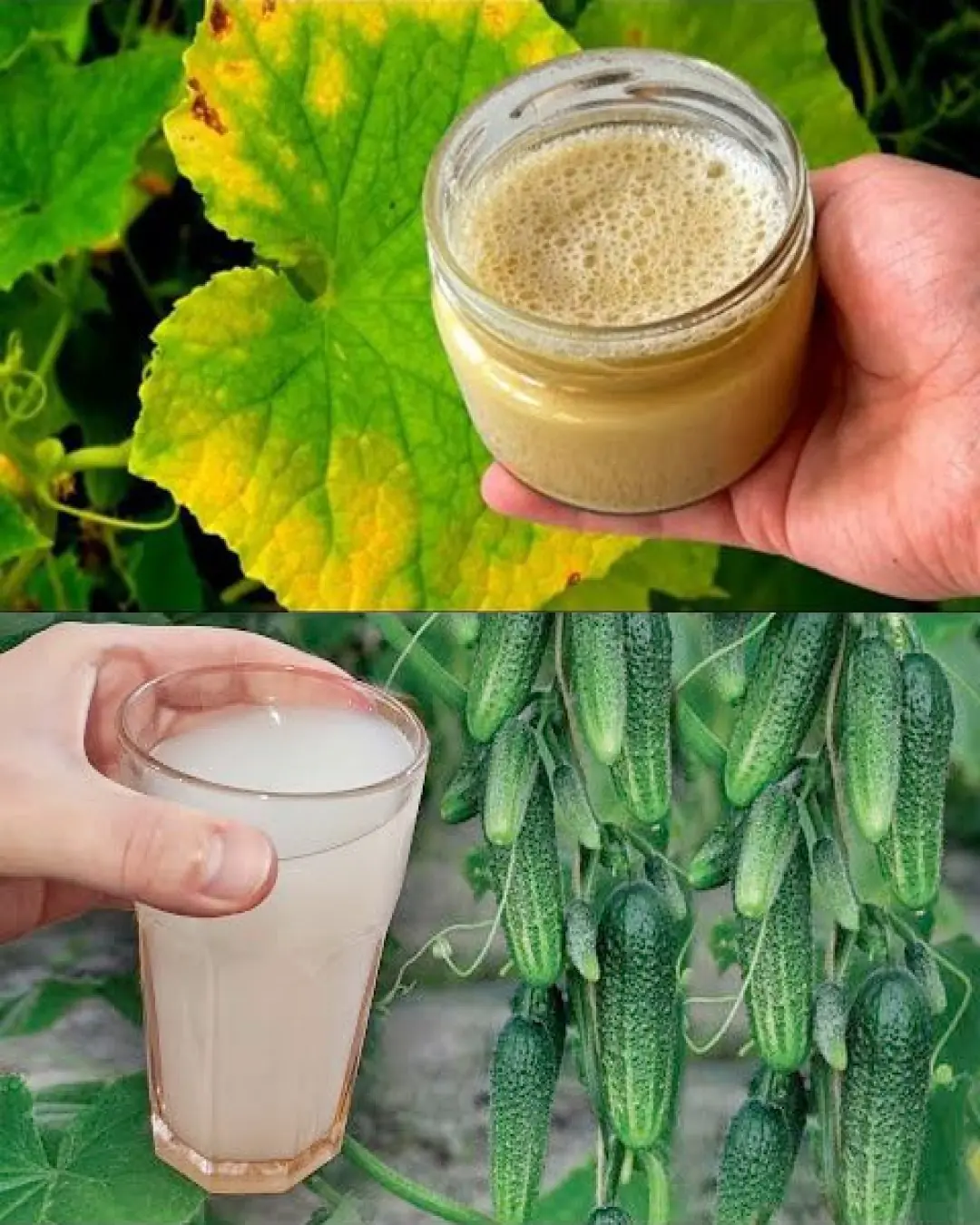
The Power of Yeast: A Natural Booster for Growing Tomatoes, Peppers, and Cucumbers
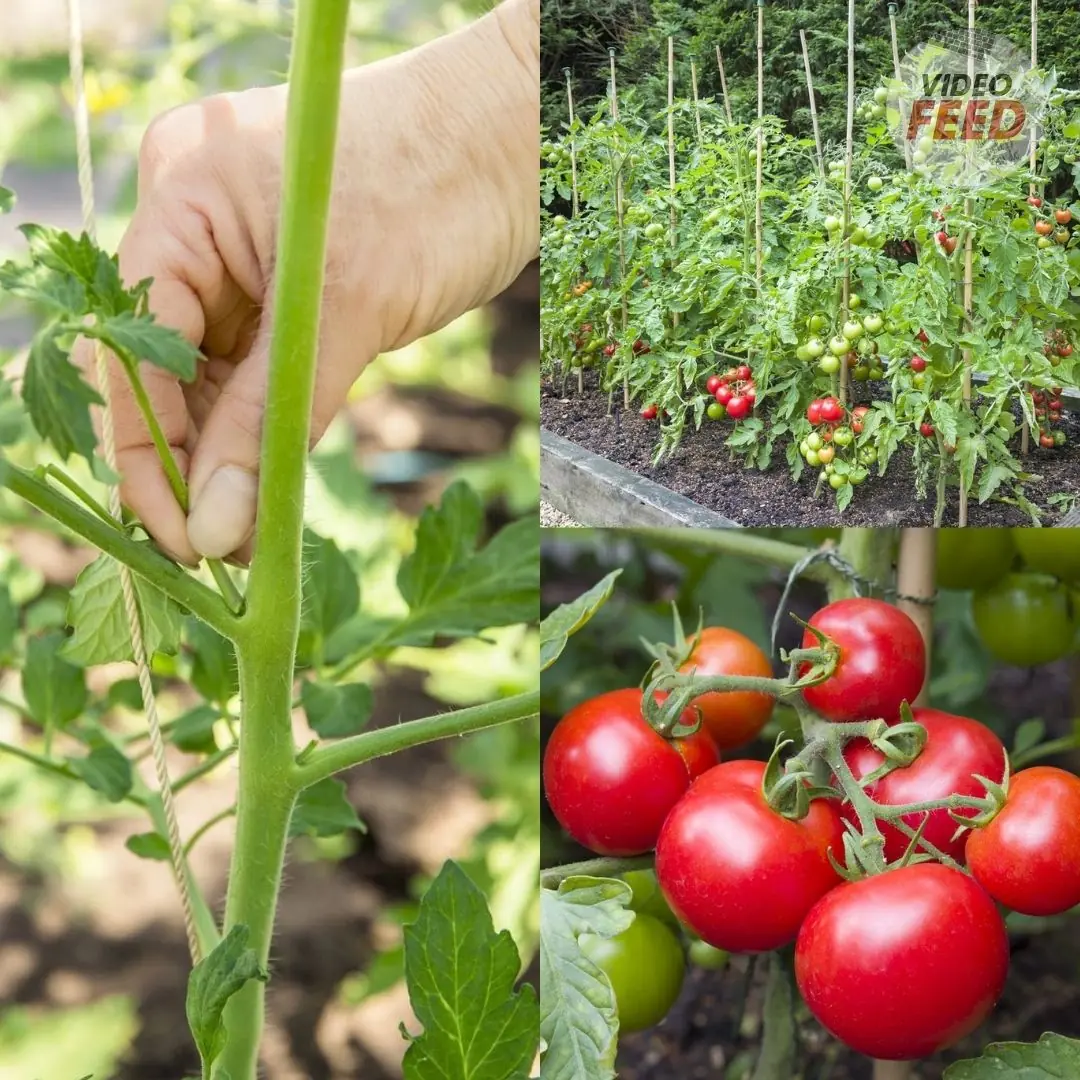
The 8 Biggest Tomato Growing Mistakes, According to Experts
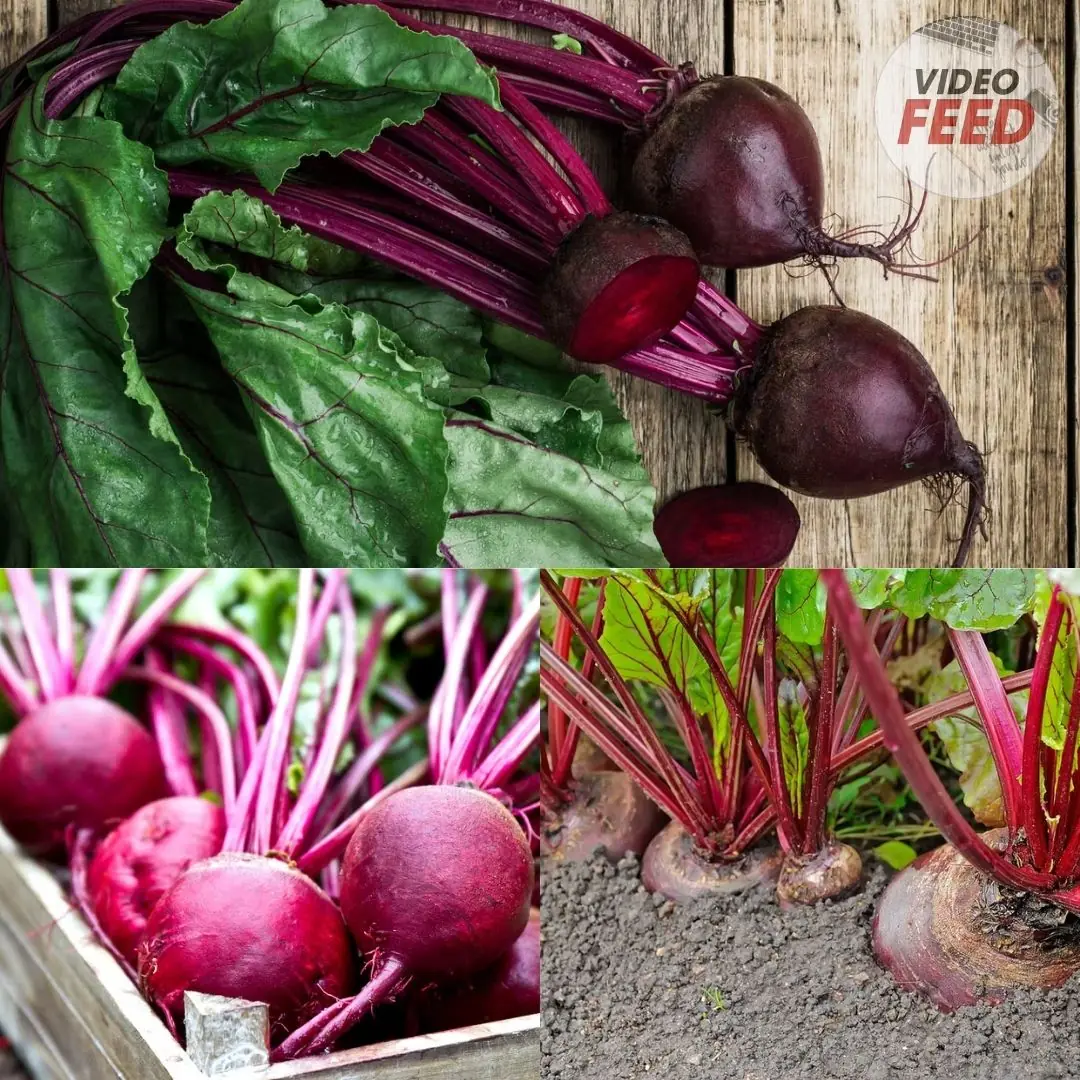
How to Grow Beets This Fall for a Hearty Autumn Harvest
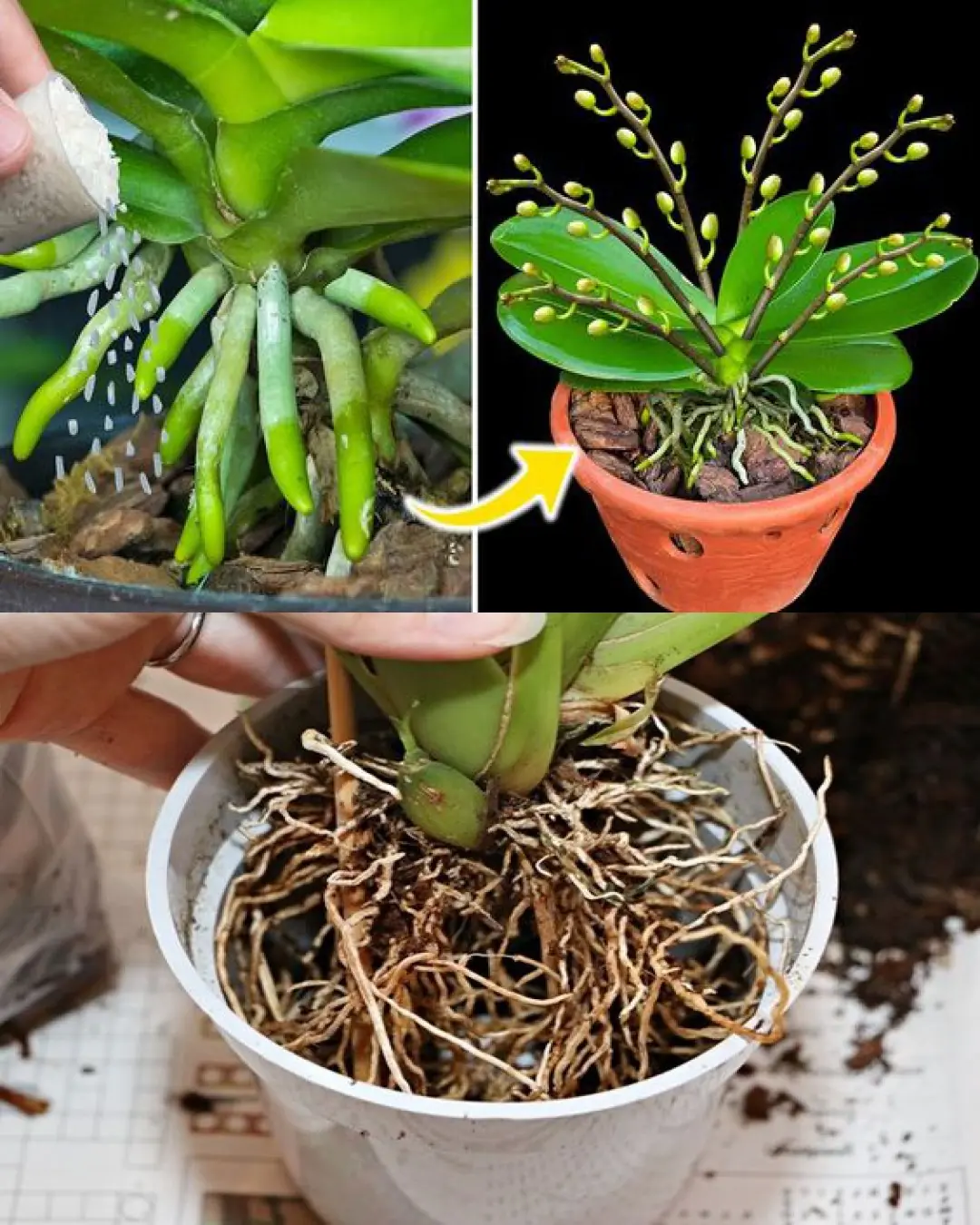
Deciphering Orchid Roots: Reasons They Extend Beyond Pots and Recommended Actions
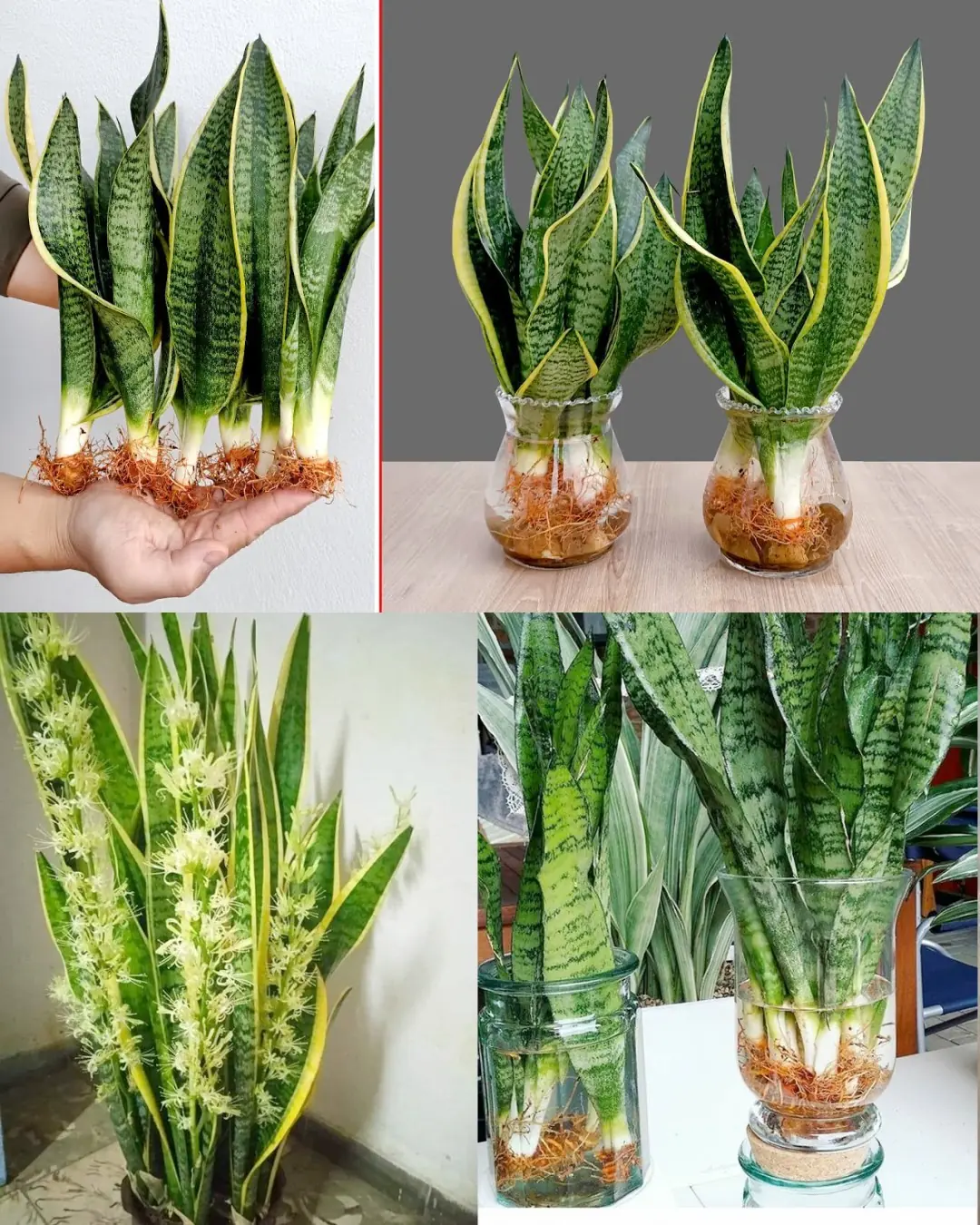
How to Multiply Your Sansevieria Quickly: From One Plant to a Thriving Collection
News Post

15 Years Can.cer-Free: Japanese Doctor Shares 5 Simple Habits to Keep Can.cer Cells from Returning

3 familiar household items that are harmful to health

6 eating habits that silently destroy your health

Diabetics are ‘very afraid’ of a spice that is abundant in the market: American experts say it is ‘as good as prescription drugs’

7 “Golden” Summer Vegetables: Fresh, Chemical-Free, and Worth Eating Every Day

Rub Ginger on the Soles of Your Feet Before Bed, and You’ll Experience Its “Miraculous” Health Benefits

When Installing an Air Conditioner, Avoid These 4 Spots to Protect Your Family’s Health

10 Tips for Growing a Big Pepper Harvest

How to Grow Kiwi in Containers at Home

What happens to your body if you drink orange juice every day?

Revitalizing Orchids Using Tea: A Comprehensive Guide with Handy Tips
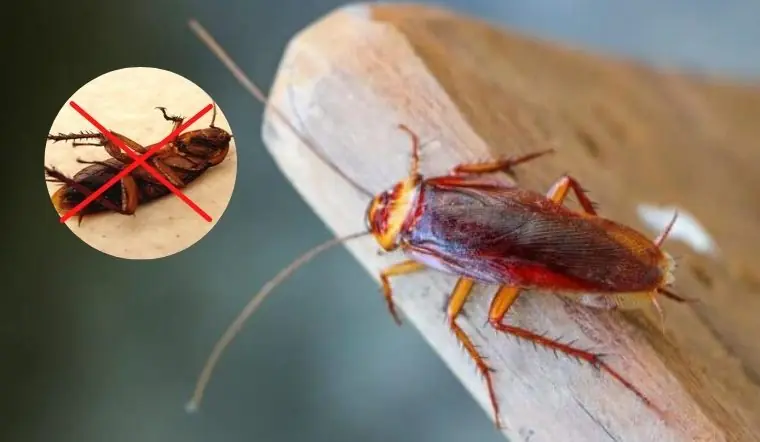
4 effective ways to ensure your home is free of cockroaches

Are two-headed snakes real? Why does this phenomenon occur?

A cup of hot water can offer many health benefits
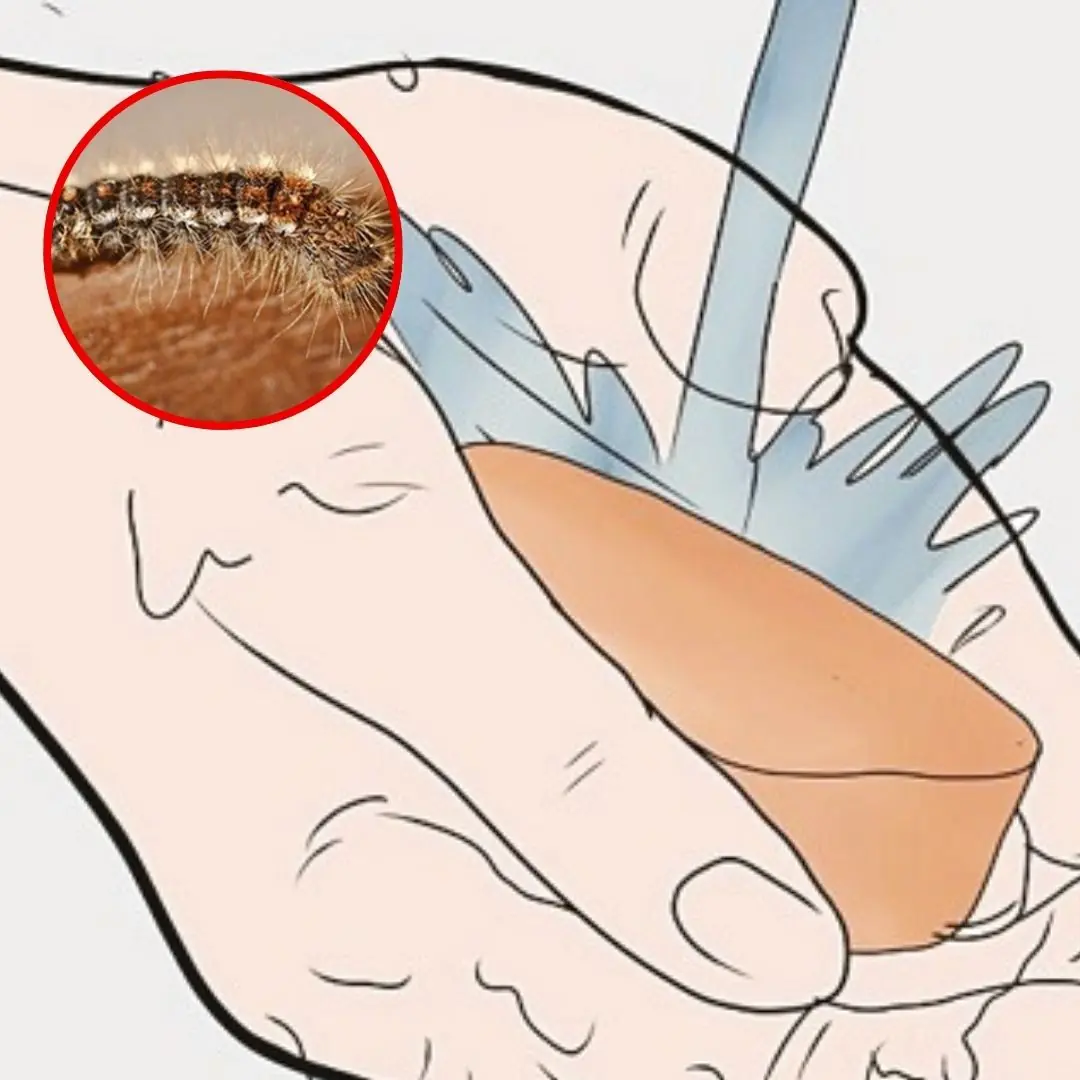
Caterpillar on you: 5 simple steps to treat at home

Otitis media – the “hidden culprit” causing vestibular disorders that many people ignore

Don't drink water before bed but still urinate at night, beware of these 3 diseases

How to Plant a Mango Seed and Successfully Grow

Secrets to growing lemongrass at home – easy to do, suitable for beginners
